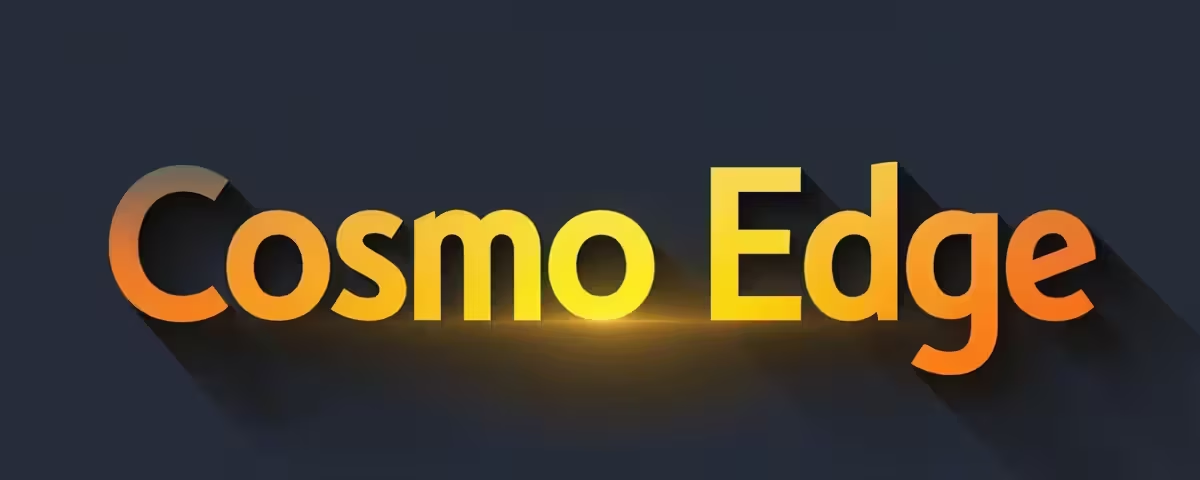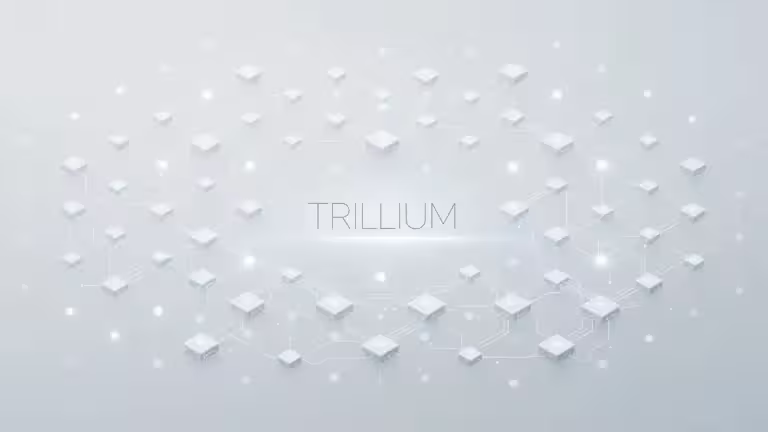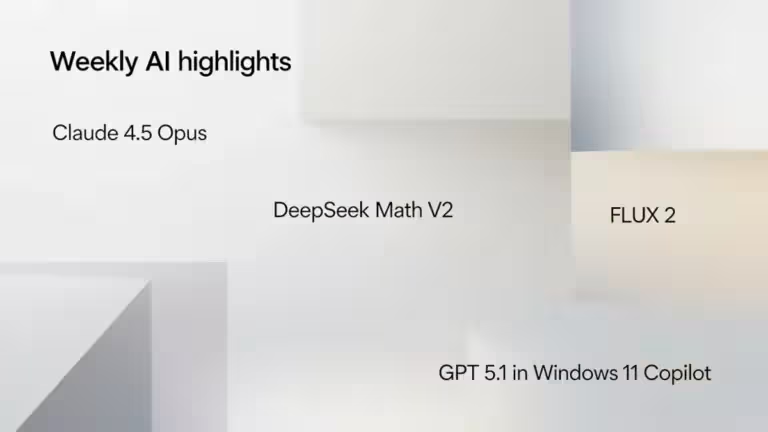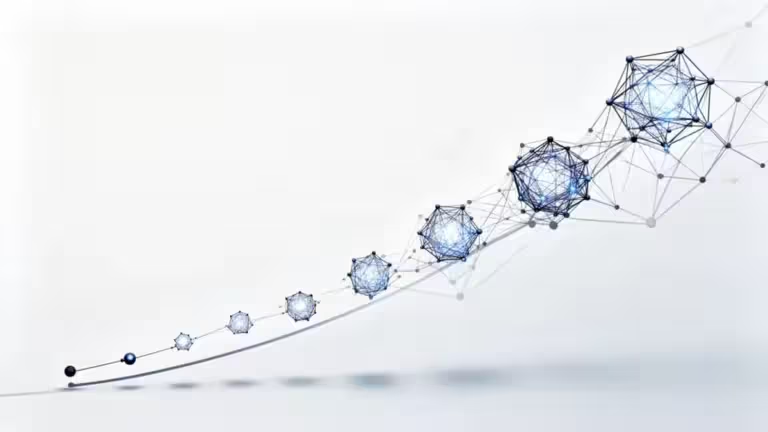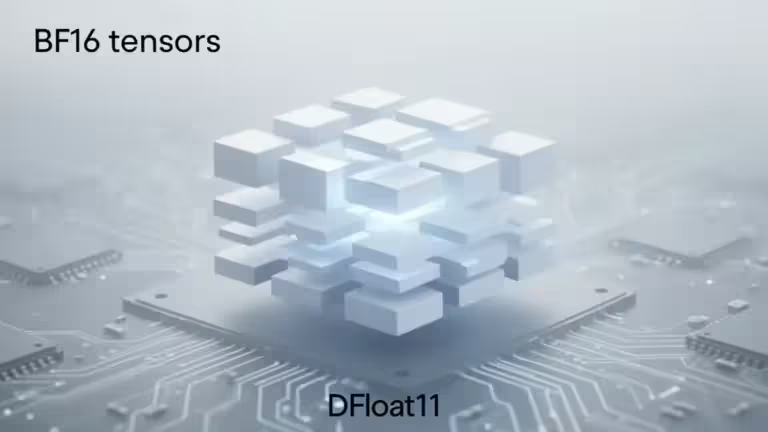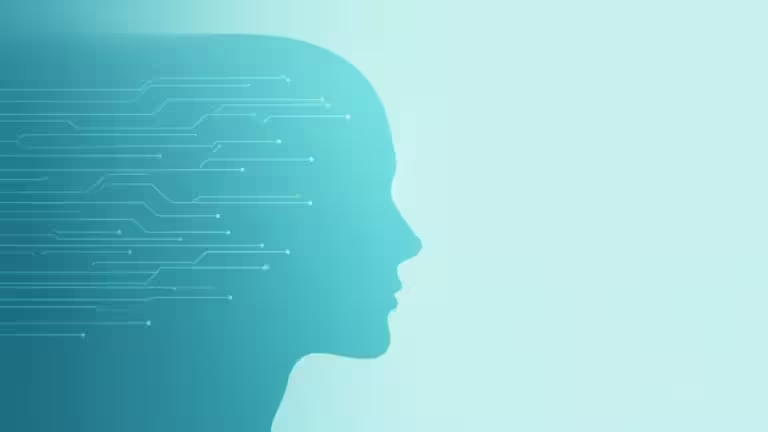AI Trends October 17, 2025: Autonomous Agents, 3D Video, and the Energy Race
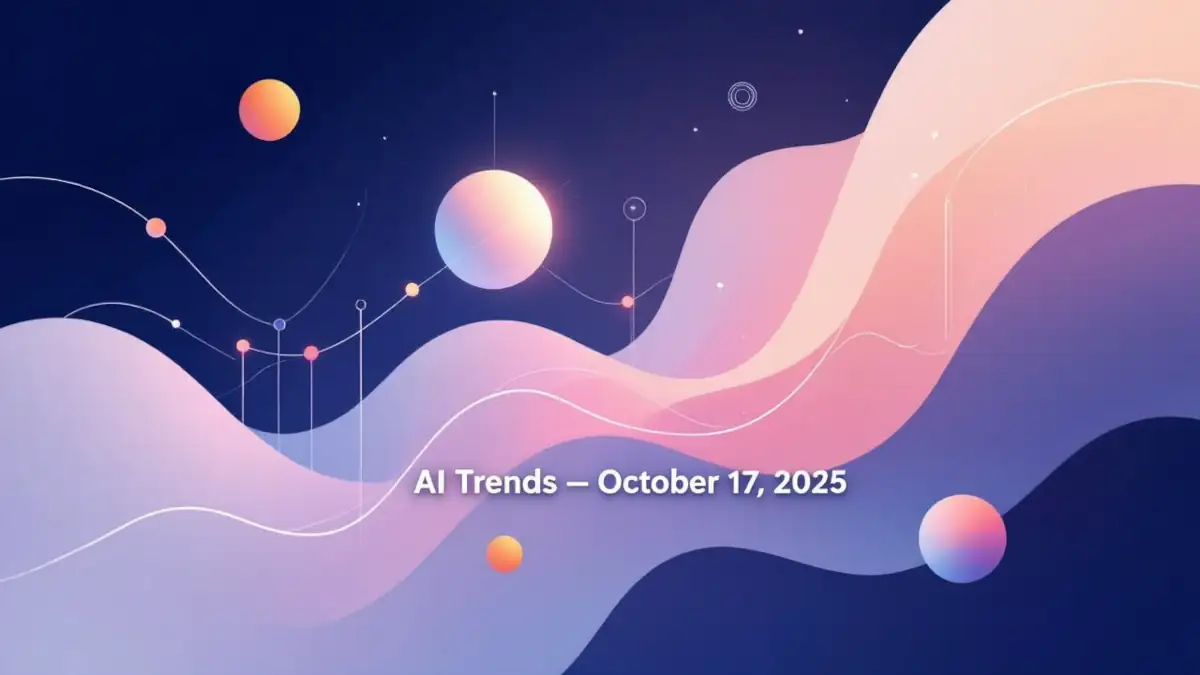
Artificial intelligence has entered a new stage of maturity. In October 2025, trends seen across research labs and social networks show an unprecedented acceleration. Autonomous AI agents, capable of performing complex tasks without human supervision, are now taking hold in companies. 3D video generation by AI is pushing the boundaries of digital creativity. And the race for energy has become a central concern as the infrastructures behind these massive models reach industrial scale.
As TechCrunch reports, OpenAI unveiled during its DevDay 2025 a major transformation of ChatGPT into a true conversational platform, featuring an Apps SDK that allows third-party applications to run inside the system. This marks a turning point from research-focused AI to everyday integrated AI tools. Meanwhile, Stability AI continues to innovate with Stable Video 3D, a model capable of turning a single image into a coherent 3D video, showcasing the growing power of multimodal AI systems.
These developments are part of a larger global movement led by OpenAI, Anthropic, DeepMind, Meta, Mistral AI, and Stability AI, who are collectively reshaping the technological landscape. Behind the innovations lies a crucial question: how can we power, regulate, and control an artificial intelligence that now underpins nearly every industry?
Autonomous AI agents: the next revolution in artificial intelligence
AI agents are now at the center of discussions about the future of artificial intelligence. Their promise is clear: to delegate entire processes, from planning to execution, to intelligent systems that require no direct human input. As noted by OpenAI at DevDay 2025, the new AgentKit tool enables developers to create production-ready agents capable of chaining tasks, interacting with APIs, and correcting their own errors. These “autonomous assistants” open the door to full AI workflow automation, from customer support to data management.
At Anthropic, the same logic drives innovation through Claude Skills, specialized instruction modules that let the Claude agent perform precise tasks such as report writing or document summarization. Integrated into Salesforce Agentforce, they are turning business environments into true intelligent ecosystems where humans and AI collaborate seamlessly.
Beyond the enterprise sphere, Google DeepMind has also embraced this paradigm with the announcement of AlphaEvolve, a self-reasoning research agent. According to Nature, AlphaEvolve rediscovered state-of-the-art algorithmic solutions in over 75% of test cases and optimized Google’s data center planning.
This shift marks a clear evolution: artificial intelligence is no longer just an assistant but an entity capable of reasoning, planning, and acting. It raises both optimism for productivity gains and critical questions around supervision, safety, and algorithmic responsibility.
3D video and multimodal AI: the new frontier of digital creativity
The year 2025 confirms a major trend: the fusion of AI and visual creation. Thanks to increasingly powerful models, AI video generation has reached unprecedented levels of realism. At the heart of this revolution stands Stable Video 3D (SV3D), launched by Stability AI in March 2024. This model transforms a single 2D image into a coherent 3D video, managing depth, lighting, and camera trajectories. Two variants, SV3D_u and SV3D_p, offer orbital and customizable camera motion rendering respectively.
As shown by Stability AI, the progress didn’t stop there. In March 2025, the company revealed Stable Virtual Camera, capable of generating immersive 3D videos of up to 1000 frames with no scene-specific optimization. These open source AI tools, available on Hugging Face, unlock real-world use cases in marketing, education, augmented reality, and video games.
The competition remains fierce. Google Veo 3.1, a cinematic video generation model, and Sora 2 from OpenAI (available via API) continue to push the limits of multimodal AI, blending text, image, and audio in a single creative flow. As Business Insider reports, OpenAI has temporarily halted certain video productions featuring historical figures due to ethical concerns, highlighting the regulatory challenges that lie ahead.
👉 For a complete overview of Sora 2’s announcements, see our related article: OpenAI DevDay 2025: all the key announcements on ChatGPT, Codex, and Sora 2.
The global race for AI energy and infrastructure
Behind the technological excitement lies another challenge: energy. Artificial intelligence is consuming more computational power than ever, and consequently, more electricity. According to the International Energy Agency, global energy demand from AI data centers is now growing by 4% per year, compared to 2.3% in 2023. Each hyperscale facility can exceed 100 megawatts, enough to power tens of thousands of homes.
As Reuters reports, OpenAI signed a strategic partnership in 2025 with AMD to deploy up to 6 gigawatts of Instinct GPUs, alongside a deal with Broadcom to design custom AI chips. Some estimates of 1 trillion dollars in cost actually refer to a ten-year investment plan, not an immediate expense, as clarified by TechCrunch.
To address the exploding energy footprint, major tech players are seeking sustainable solutions. Meta is building a 2,250-acre campus in Louisiana dedicated to next-generation data centers capable of delivering 5 gigawatts of power by 2030. In parallel, a collaboration between Meta and Arm aims to improve AI energy efficiency from mobile devices to supercomputers.
This escalating race for computational power creates a paradox: as models become smarter, their energy footprint expands. The key challenge for the coming years will be balancing performance, sustainability, and energy sovereignty within an ecosystem dominated by a handful of global players.
Open source AI models and democratization: DeepSeek-R1, Mistral, and Llama 4
Alongside proprietary giants, the open source AI ecosystem continues to grow rapidly. The DeepSeek-R1 model, released on Hugging Face under an MIT license, exemplifies the effort to make artificial intelligence more transparent and accessible. As TechCrunch confirms, DeepSeek AI opened not just the model weights but also part of its training pipeline, enabling researchers and developers to experiment freely.
This movement extends to Mistral AI, which raised €1.7 billion in September 2025 to strengthen its open-weight models and fund an Innovation Lab aimed at promoting enterprise adoption of AI. Meanwhile, Meta continues to advance Llama 4, now a benchmark among open source AI models for custom applications.
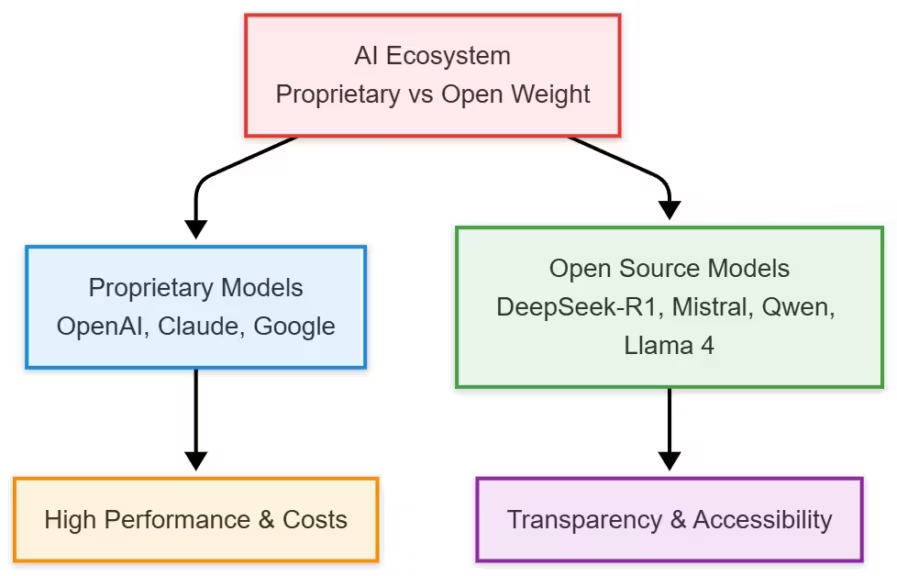
Even OpenAI, long criticized for its closed approach, has partly re-embraced open source principles with the launch of GPT-OSS, a model family released under the Apache 2.0 license.
👉 Also read: The best open source AI models in 2025
Regulation and ethics: Europe leads with the AI Act 2025
As the race for AI performance intensifies, regulation has become unavoidable. The European AI Act, which came into force in August 2024 and became fully applicable in 2025, is the world’s first comprehensive legal framework for artificial intelligence. As the European Commission explains, the Act imposes strict requirements for transparency, traceability, and safety on high-risk models, while banning practices deemed contrary to fundamental rights.
The regulation is more than a legal framework, it’s also a response to the rise of Shadow AI, where employees use unapproved AI tools at work. According to Microsoft UK Stories, more than 70% of UK workers admit to using public AI tools without IT department authorization.
Platforms are also adapting. Meta and Instagram introduced new parental control systems in October 2025 to limit teenagers’ interactions with AI chatbots, particularly on sensitive topics.
This increased vigilance shows a cultural shift: Europe aims to strike a balance between innovation and protection, ensuring that AI progress respects privacy, safety, and democratic values.
An ever-evolving artificial intelligence landscape
The AI trends of October 17, 2025 confirm a profound transformation of the global tech ecosystem. Artificial intelligence is no longer just a research field but an industrial infrastructure powering sectors from healthcare to digital creation, energy, and scientific research.

Autonomous agents are ushering in a new era of intelligent automation, capable of reasoning and acting with unprecedented independence. Advances in 3D video generation and multimodal AI are redefining creativity, while the energy race exposes the material limits of this rapid expansion. In parallel, open source AI models such as DeepSeek-R1, Qwen and Mistral are driving democratization, transparency, and collaborative innovation.
Yet this acceleration brings new challenges: ethical oversight, environmental sustainability, and technological sovereignty. As Nature notes, the question is no longer whether AI will transform the world, but how societies will shape its power. The year 2025 thus marks a turning point: that of an AI becoming systemic, both a tool and a mirror of our digital civilization.
Sources
External sources
- TechCrunch – OpenAI DevDay 2025: AgentKit, Apps SDK, and ChatGPT
- TechCrunch – OpenAI: A trillion-dollar AI infrastructure plan
- Stability AI – Official presentation of Stable Video 3D
- Hugging Face – Stable Video 3D model (SV3D)
- Business Insider – OpenAI pauses Sora videos for ethical reasons
- Reuters – OpenAI and AMD: 6GW GPU partnership
- Nature – DeepMind AlphaEvolve and autonomous research
- TechCrunch – DeepSeek-R1: open source model under MIT license
- Hugging Face – DeepSeek-R1 MIT license (full model)
- European Commission – AI regulatory framework (AI Act)
- Microsoft UK Stories – Rise of Shadow AI and security concerns
- The Hill – Meta adds parental controls for AI teen interactions
Internal links
- OpenAI DevDay 2025: all the key announcements on ChatGPT, Codex, and Sora 2
- Open Source News October 2025: AI, Frameworks, and Innovations
- The best open source AI models in 2025
- Which Qwen 3 model should you choose? Complete comparison of the 235B, 32B, 30B, 14B, 8B and 4B versions
Your comments enrich our articles, so don’t hesitate to share your thoughts! Sharing on social media helps us a lot. Thank you for your support!
